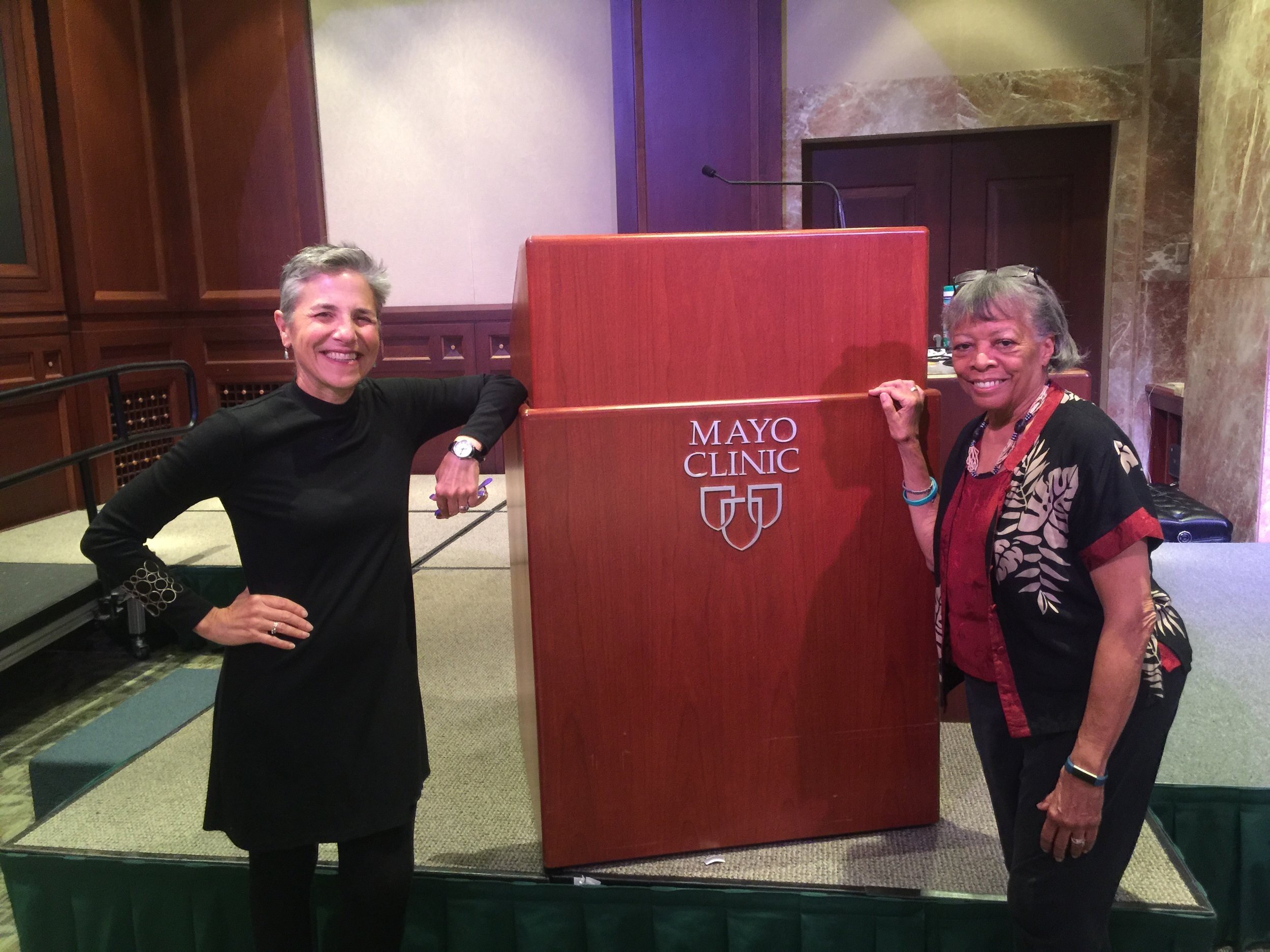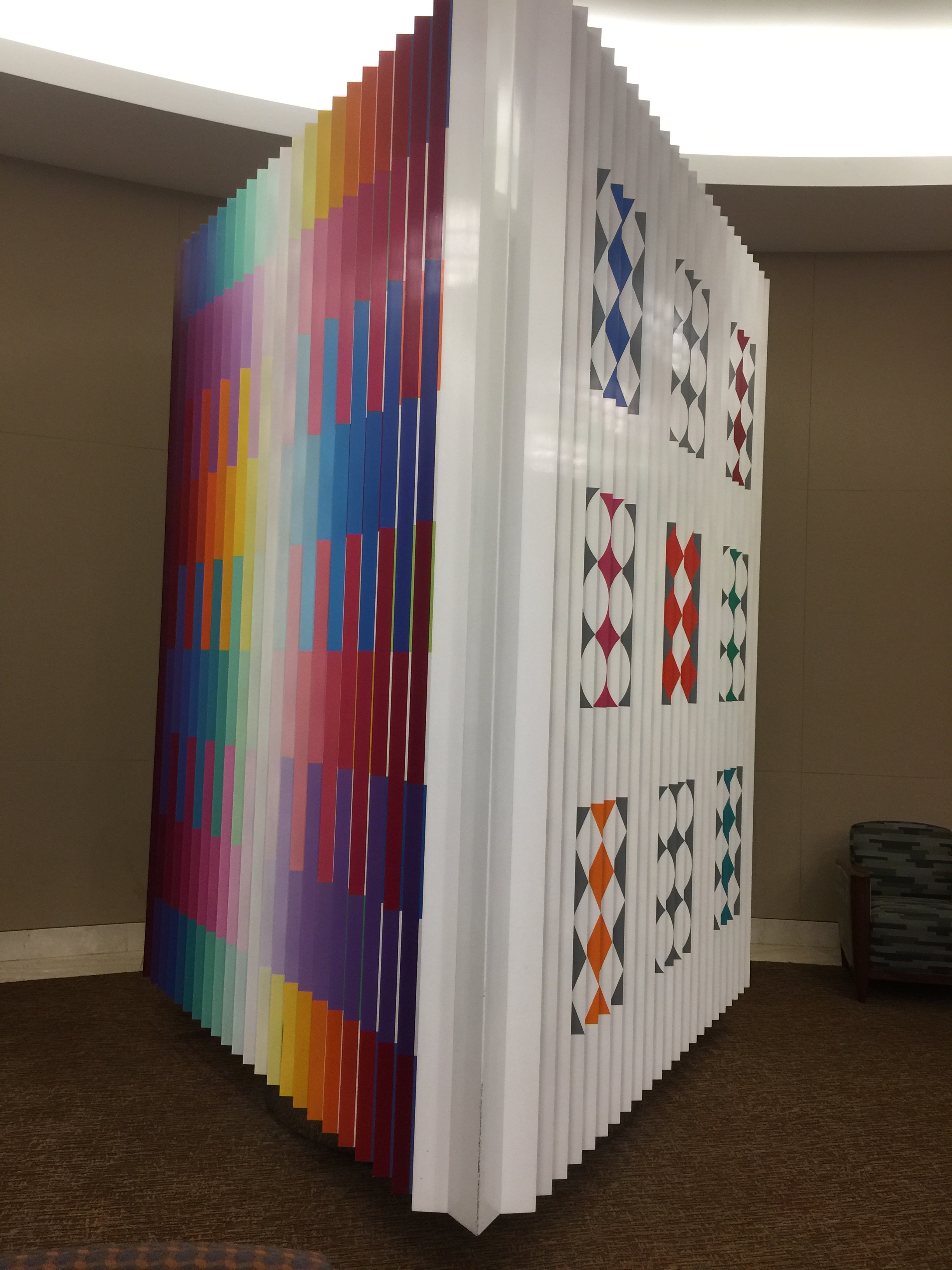Julie Strandberg and Rachel Balaban traveled to Rochester, Minnesota to attend the 4th Annual Mayo Clinic Humanities in Medicine Symposium. Health Humanities explores the relationship between human well-being and humanistic disciplines to promote the artful and compassionate delivery of health care. This conference offered the opportunity to reflect on and share experiences of the patient and the care provider, and to advocate for emerging research and innovation in the field.
Julie and Rachel presented Repertory, Healing, and Building Community: An Intergenerational Dance Program for People with Parkinson’s Disease (PD) and Dancing for All People (DAPpers). They screened the Commencement Concert performance of Battleworks and described ASaP and its work across generations and health conditions.
Their presentation was on the last day of the conference early on a Sunday morning, not a great time to attract a large crowd. While the audience was small, it was an enthusiastic group, including Dr. Paul Scanlon, Medical Director of the Dolores Jean Lavins Center for Humanities in Medicine at the Mayo Clinic. It was an intimate gathering that offered powerful conversation.
As always, conferences like this are a great opportunity to see what’s going on in the world of arts and health humanities and to be inspired by other people doing extraordinary work in this crossover sphere. And it was clear from the start that the Mayo Clinic was the right place for this gathering.
On their first evening, they were given a guided tour of the Mayo Clinic Art Collection, entitled “Art & Healing.”
The brochure sums it up: “The best interest of the patient is the only interest to be considered”—William J. Mayo, M.D.
The primary mission of Mayo Clinic is excellence in patient care—yet its founders recognized that caring for the whole patient extends beyond treating physical ailments. Since its inception, Mayo has used art, architecture and beauty in surroundings to address the “spiritual aspects” of medical care.
They were totally wowed by the art the humanities program has amassed since it started in 1986. Included in this collection sprinkled throughout corridors and atrias were works of art by Auguste Rodin, Andy Warhol, Dale Chihuly and Alexander Calder, to name a few.
The Mayo Clinic Humanities program affirms a strong link between art and healing and claims art offers a different kind of medicine. According to Dr. Scanlon, "the arts do have a healing aspect. They improve the quality of experience for patients."
Other highlights of the symposium included the opening plenary session called “Medicine Unscripted: The Need For Medical Improv in Modern Healthcare” given by Katie Watson, JD Feinberg School of Medicine at Northwestern. Shining a light on the role of improvisation in healthcare, many of us were entertained and educated by the talk and the idea of integrating improv and medicine.
Arthur Frank gave the closing plenary “Why Illness Needs Better Stories: Medical Humanities for the Patients”. Arthur’s work on illness narrative is often referenced in our class, so they were grateful to hear his talk.
As promised by the symposium organizers, the focus of the weekend “was on transforming perceptions in health care through the humanities by reviewing innovative programs at the intersection of health and humanistic disciplines and by exploring vital themes, emerging research and innovation in the field.” Julie and Rachel left the conference energized by all that they were exposed to and more clear than ever that ASaP’s value proposition is placing undergraduate students at a unique intergenerational intersection of art and science.




